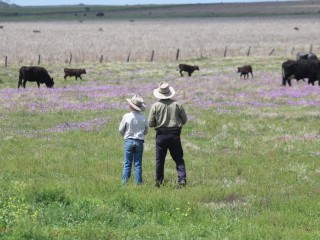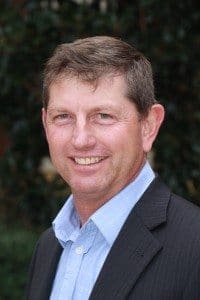 There has been a lot said about the level of accumulated debt in the cattle industry. Debt has been a key driving force that has shaped the industry over the past decade and the management of that debt will define who remains a part of the industry over the next decade.
There has been a lot said about the level of accumulated debt in the cattle industry. Debt has been a key driving force that has shaped the industry over the past decade and the management of that debt will define who remains a part of the industry over the next decade.
But debt is not the entire story of the beef cattle industry. There are properties that continue to make money. At a best guess it will be those that have been fortunate or prudent enough to retain low manageable debt levels that continue to make a profit. The data that does indicate this is the increase in the use of Farm Management Deposits (FMD).
Farm management deposits are a risk management tool to help farmers deal with uneven income. The scheme allows you to claim a tax deduction for deposits you make in the income year you made them. If you withdraw a FMD, the amount of the deduction you claimed is included in your assessable income in the income year the deposit is repaid to you. So basically it moves the tax point into the future.
To be eligible for the scheme you need to be carrying on a primary production business at the time of making the deposit. There is no limit on how many accounts an individual can have as long each account is over $1000 and below $400,000 in total for each individual.
The number and size of FMD’s is collated and published by the Department of Agriculture and Fisheries. This data is updated quarterly and it is interesting to take a look at what the data might be able to tell us about the cattle industry today.
FMD takeup
First up it shows a strong correlation to seasonal conditions which makes sense. As you sell livestock, the money earned is placed into a FMD and then redrawn to repurchase when conditions are favorable. There is a strong flow of deposits around June each year which again makes sense as it would be recommended by most accountants to shift the tax point forward to reduce the tax impost in the current year.
The data split has some aggregation between beef, beef and sheep and beef and grain. If you look at the total Australia wide there are $1.4 billion in deposits. In the beef category alone there is $778 million. It would be reasonable to consider these producers have very little or no debt as, in general terms it would make little financial sense to increase deposits if you had an associated tax deductible debt as the tax deduction is claimed in either case and the interest expense would be higher than the interest earned on deposit.
 It would be a reasonable conclusion to consider the equity position is strong for producers usingFMD’s. A further positive note is that the deposit amounts are increasing over time. Comparing the June figures shows the total deposits to increase by around 6pc year on year. The only negative year since inception of the scheme is 2009 with 2010 showing no increase on the previous low year. The fact that these years coincide with negative returns across all asset classes suggests not all spare cash goes into FMD’s. Presumably there is a flow of cash into investable off farm assets as well.
It would be a reasonable conclusion to consider the equity position is strong for producers usingFMD’s. A further positive note is that the deposit amounts are increasing over time. Comparing the June figures shows the total deposits to increase by around 6pc year on year. The only negative year since inception of the scheme is 2009 with 2010 showing no increase on the previous low year. The fact that these years coincide with negative returns across all asset classes suggests not all spare cash goes into FMD’s. Presumably there is a flow of cash into investable off farm assets as well.
It is a difficult to draw any accurate conclusion of how many properties would be using these FMD’s because you are not limited in the number an individual can have. But it is not unreasonable to assume the average property might have 2 being in each of the husband and wife’s name, if so, there would be a touch over 3000 FMD accounts. Now the MLA website provides an estimate of 80,000 properties Australia wide that include cattle. So a bit of loose math’s suggests there are no more than 4pc of cattle properties Australia wide that are making use of these instruments. At best if we assumed each account represents an individual property it cannot be more than 8pc.
Making conclusions from this analysis might not stand up to strict statistical analysis. It may simply be that producers are seeing better investment off farm and are not choosing to use these instruments. It certainly doesn’t mean only 4pc of cattle properties are profitable.
However, if we assume that the money deposited in to FMD and debt are the two options to fund recurring expenditure across financial years it may also be concluded that equity is only being used sparingly and the increase in debt can be attributed to the majority of properties Australia wide.
Business returns are based on revenue, not capital
There has been a lot of analysis done on the increase in debt in the beef industry. In particular the increase in debt over the last 10 years has been extraordinary. Perhaps the most worrying point to make is that over the period of this increase in debt is the capacity to service this debt has fallen.
This is an important point. There has been work done by ABARE and QRAA where they created a set of consolidated accounts for the Queensland beef industry that shows income levels have remained stable and expenses have actually fallen albeit slightly. This work aggregates the data so by definition individual experiences will be different.
In the study they isolated interest expense from general recurring expenditure required to run a property. What this demonstrates is the increase in property prices has not been based on increasing levels of profit that can be made from these operations. Profitability has fallen by the level of interest expense that has been incurred with the accumulation of debt.
There is no doubt that those enterprises that have markedly increased debt over the past decade without any associated increase in profit will be starting to experience some financial pressure at the moment with property values falling. Dry seasonal conditions will merely serve to bring this experience forward.
Investing in fixed assets requires the patience to consolidate after each initial outlay of capital. When prices of fixed assets like property rise quickly the reason portrayed by property experts in the media nearly always settles around the notion that the rise in debt has been in response to the increase in land values. In fact it is nearly always the other way around. Land values are in response to increases in debt. It is the availability of and the willingness to hold ever increasing levels of debt that pushes up fixed asset prices.
It now seems accepted that values of beef properties have fallen since the peak in 2007, perhaps significantly in some areas. At some point prices will settle but in the process there will be a number of properties that will change hands at discounts to the price they were purchased at.
Properties changing hands due to financial stress is hard to watch at a personal level. Some people will not be in the industry when the property prices and debt levels start to level out. However, at a macro level it is important for the industry as a whole for it to happen.
It might be fair to say that people are belatedly learning that business returns are in reality based around revenue not capital. If you borrow against an asset – no matter what that asset value is – you have to service the debt from the cash flow you generate from that asset. Owning an asset that is rising in price (quickly) is exciting, but in itself it does not fund recurring expenditure. If you want capital to fund recurring expenditure it requires the asset to be sold.
Funding recurring expenditure will require the use of debt or equity – there is nothing else. If you use equity then a Farm Management Deposit is a tool available to primary producers that has demonstrable positive uses. It will of course be individual circumstances that direct the benefit or otherwise of actually using this tool and professional advice around this decision should be sought.
Graham Financial is a privately owned boutique financial planning practice which has been in operation since 1985. AFSL 327520. The advice in this article is general in nature; advice specific to your circumstances should be sought before acting on this advice. The author of this article can be contacted on (07) 4613 0514, by email at admin@grahamfin.com.au or online at www.grahamfin.com.au
